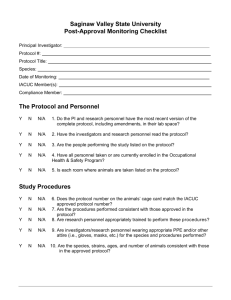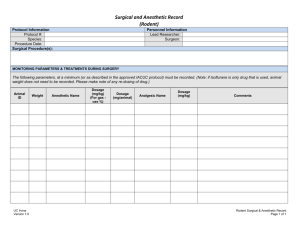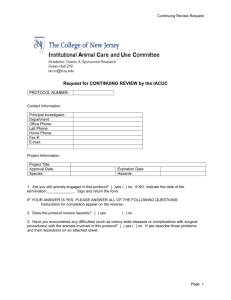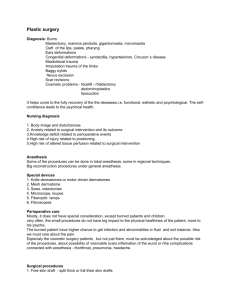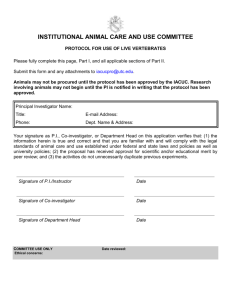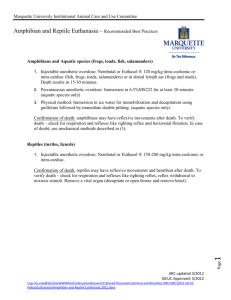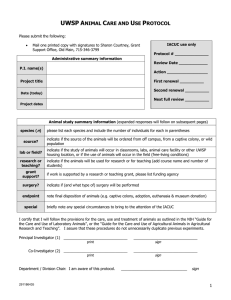Anesthesia, Surgery and Post
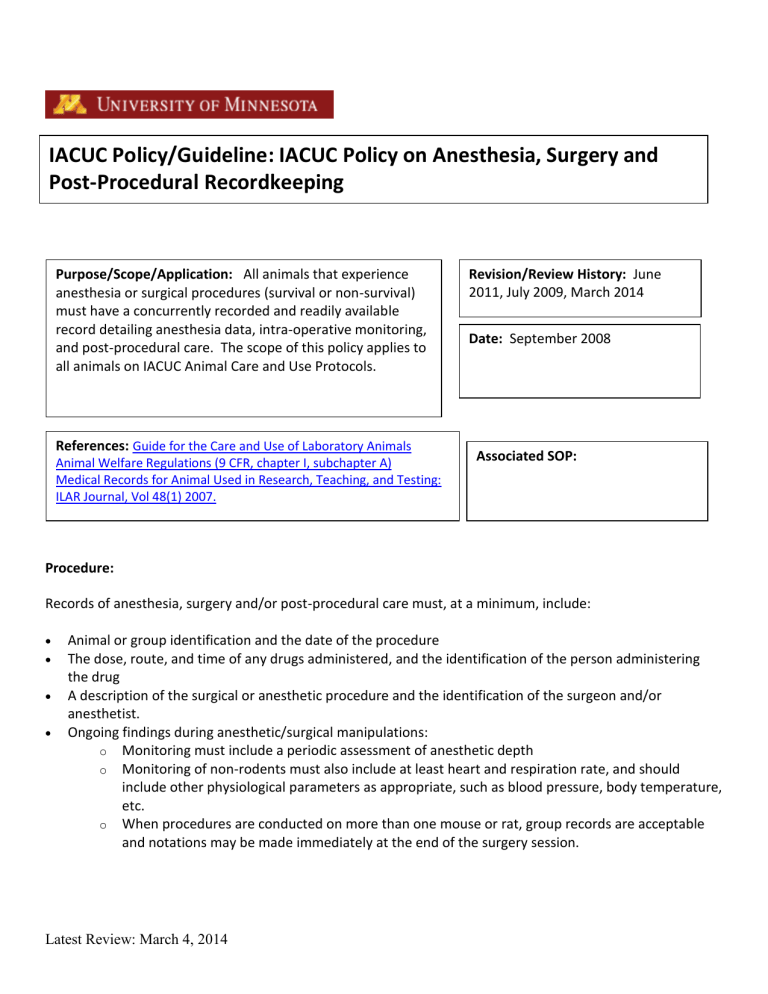
IACUC Policy/Guideline: IACUC Policy on Anesthesia, Surgery and
Post-Procedural Recordkeeping
Purpose/Scope/Application: All animals that experience anesthesia or surgical procedures (survival or non-survival) must have a concurrently recorded and readily available record detailing anesthesia data, intra-operative monitoring, and post-procedural care. The scope of this policy applies to all animals on IACUC Animal Care and Use Protocols.
Revision/Review History: June
2011, July 2009, March 2014
Date: September 2008
References: Guide for the Care and Use of Laboratory Animals
Animal Welfare Regulations (9 CFR, chapter I, subchapter A)
Medical Records for Animal Used in Research, Teaching, and Testing:
ILAR Journal, Vol 48(1) 2007.
Sample forms
Associated SOP:
Procedure:
Records of anesthesia, surgery and/or post-procedural care must, at a minimum, include:
Animal or group identification and the date of the procedure
The dose, route, and time of any drugs administered, and the identification of the person administering the drug
A description of the surgical or anesthetic procedure and the identification of the surgeon and/or anesthetist.
Ongoing findings during anesthetic/surgical manipulations: o o o
Monitoring must include a periodic assessment of anesthetic depth
Monitoring of non-rodents must also include at least heart and respiration rate, and should include other physiological parameters as appropriate, such as blood pressure, body temperature, etc.
When procedures are conducted on more than one mouse or rat, group records are acceptable and notations may be made immediately at the end of the surgery session.
Latest Review: March 4, 2014
Notation of any variations from the normal and expected events during the anesthetic and recovery periods, including the actions taken and the time performed, the animal’s response to these actions, and the identity of the person performing these actions
Assessment for pain and distress
Actions taken to alleviate pain and distress, including non-pharmacologic interventions, and the response to these actions
A notation defining the end of the monitoring period (euthanasia or functional recovery from the sedation or anesthesia), including the time, date, and the ability to identify the person performing this observation
This record must be readily available to the IACUC or their designated proxies, veterinary staff, and representatives of regulatory and accrediting organizations. Records must be maintained for the duration of the approved protocol or the life of the animal, whichever is longer.
Additional Guidance on Recordkeeping:
Entries should be initialed or signed by the person who made the observation or administered the
treatment and traceable to the person who recorded or performed it.
The date and time of the entry should be recorded. Entries should be chronological and reference a specific time.
Entries should be made proximately to the time of the observation or treatment. Write it down as it happens.
Drug treatments must be recorded so that a total dose is recorded or can be calculated, e.g. either recorded in total mg, or a volume plus a concentration.
For example: 0.2 mg acepromazine, or 0.1 ml acepromazine (2 mg/ml)
During anesthesia and anesthetic recovery for non-rodents, physiologic parameters must be observed and recorded frequently. At a minimum a heart rate and respiratory rate should be recorded every 15 minutes for a stable animal in a short procedure. Other observations should be made as warranted: body temperature, color of mucous membranes, etc. depending on the type and length of the procedure. The animals must be monitored until full recovery, which includes purposeful movements around the cage.
The end of the monitoring period must be noted and signed by the person who made this determination, whether due to recovery or euthanasia.
Recorded observations should include descriptive language, rather than only state a conclusion.
Descriptive phrases include “active, no lameness noted”, “all food consumed, normal feces present”,
“incision is intact”, “swelling extends 1 cm from wound margins, no discharge noted”, “attitude alert”.
Inadequate phrases (without accompanying supporting descriptions) include “normal,” “comfortable”,
“OK”, “recovered”.
Post-procedure observations should be recorded daily for a minimum of 3 days, counting the day of
surgery as day zero, and include at least the following: o Observation of the comfort level of the animal. This can be evaluated by activity, mental attitude, elimination, food consumption, etc. o A specific check of the surgical wounds. Is there any discharge, redness, or swelling? Is the incision intact? o If any catheters or devices are in place, describe the condition of the device and record any procedures performed such as cleaning the skin exit site or flushing a catheter to keep it patent. o Any procedure-specific observations related to potential or unexpected complications such as organ failure, infection, ischemia, etc.
Latest Review: March 4, 2014
Latest Review: March 4, 2014

